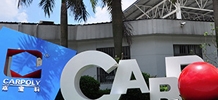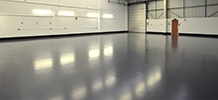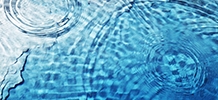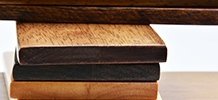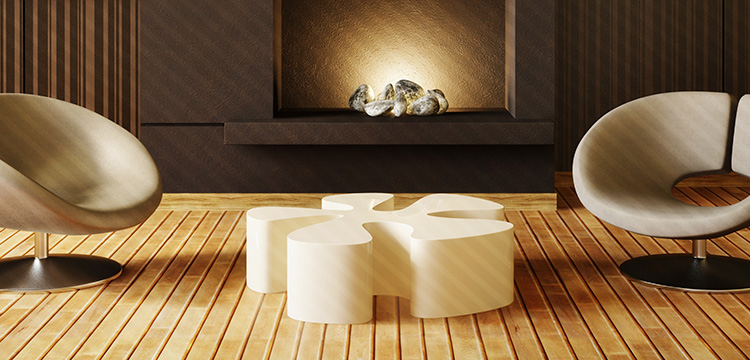Comparative introduction to pigment and filler in coating
2018-01-30
Pigment and filler are very different but people often mix them together, especially white pigment and filler. Pigment and filler are widely used in plastic, coatings and ink. There are many discussions on pigment and filler in coating, and this passage is a simple summary of the use of pigment and filler in coating.
Definitions of pigment and filler
Pigment is a kind of colored (including white) fine particle substance. It is not dissolve in dispersion medium and it is a kind of organic or inorganic substance displaying its color through "particles" (displaying color through particles). The particle size range of pigment is usually within 30nm-100μm. The colors, covering property, tinting strength and other characteristics is greatly related with its dispersing state (the existence state of pigment particles in a medium) in a medium. The organic pigment and dye have many things in common, and the fundamental difference lies in that the dye can dissolve in dispersing medium and displays its color with "molecular gene" (displaying color through molecular).
Filler is a kind of fine particles substance with the main function of filling in a medium. It cannot dissolve in dispersing medium and is also called extender pigment. The appearance of dry filler powder is usually white or light gray and its covering ability and lightening power in medium are low. By adding filler in a medium, the physical and chemical properties of non-color substances in the medium can be effectively changed.
Both pigment and filler are important components of coating. According to the use requirements of coating, the kinds and quantities of pigment and filler are different. Sometimes, there may be more than ten kinds to be mixed together, and the quantities vary from one percent to more than ten percents, sometime even reaches more than 60%. These pigment and filler can ensure that the coating has good covering ability and rich colors, they can also give other special effect to the coating film and application. To be used in coatings, there must be specifications on the dispersity, whiteness, pigment, covering ability, tinting property, oil absorption, particle size distribution, acid-base resistance property, light fastness, weather resistance, temperature resistance and other properties according to the use.
Functions of pigment and filler
1. The functions of pigment
Pigment is one of the indispensable components in the production of coating and painting. Besides providing color decoration to the coating film, it can also improve the physical and chemical properties of the coating like covering ability, light fastness, weather resistance, temperature resistance, chemicals resistance, gloss and mechanical strength. The use of functional pigment in coating can bring special properties to the coating like special decoration effect (metal feeling, pearly gloss, night light, fluorescence, etc) as well as special functions like corrosion resistance, fire retardant, conductivity, anti-static and temperature indication.
2. The functions of filler
There are many two functions of filler in coating: the first one is filling to reduce cost; the second one is to change the physical and chemical properties of coating film or paint vehicle by adding filler. Modern coating technology pays more attention to the second function of filler. If different kinds and quantities of filler are chosen, the storage and application properties of coating can be effectively improved, and the mechanical strength, abrasion resistance, water tolerance, UV resistance, thermal insulation and cracking resistance of coating film can be also improved. Compared with pigment, most fillers have advantages like low cost, low oil absorption and easy dispersity.
Functions of pigment and filler in coating
Classifications | Functions |
Tinting pigment | 1.Making the paint vehicle and film colorful, improving the decoration and protection properties of paint film (mixing of colors); 2.Guarantee of the covering performance and vibrance of coating; 3.Guarantee of resistance to light, weather, acid, base, solvent, temperature, etc.; 4.Guarantee of dispersity and color developing ability of pigment in coating; 5.Providing safe color (safety sign) |
Anti-rust pigment | It can prevent chemical or electrochemical corrosion on the surface of metal (there are physical and chemical methods to resist rust), for example, non-active aluminum powder, graphite and iron oxide red; activated zinc oxide, zinc powder, basic lead chromate, red lead and zinc chrome. |
Pigment of special functions | It can give the coating special functions, for example, pearl pigment gives the coating film shining effect like pearl; metal pigment makes the coating film flashing like metal; nano pigment makes the coating film to be resistant to UV, mildew, water, weather and temperature; there are also temperature indication pigment, night light pigment, fluorescence pigment, color-changing pigment and high-temperature resistance pigment which can give corresponding effect to the coating film. |
Filler
| 1.To improve the mechanical strength of coating and coating film; 2.To increase the content of solid, and reduce the amount used of resin and solvent to reduce cost; 3.To give the coating good liquidity, opening effect and application performance and increase coating film thickness; 4.To participate in film-forming, partially cover and resist wearing and UV to extend the service life of the coating film; 5.To have special functions like shielding UV, resist heat and to have lower toxicity; 6.To improve performance of other additives like thickener, rheological agent, antistatic agent and ultraviolet stabilizer. |
Classifications of pigment and filler
Classified by its chemical composition, pigment can be divided into organic and inorganic pigment:
Inorganic pigment mainly includes carbon black and oxides and salts of iron, zinc, chromium, cadmium, titanium and other metals;
Organic pigment can be divided into azo pigment (monoazo and bisazo), lakes, copper phthalocyanine, condensed ring and organic macromolecule pigment.
Filler is also divided into inorganic filler and organic filler:
Inorganic filler is particle filler mainly consisting of natural minerals which are explored and processed and only a few kinds of filler is made by treatment. There are silicon oxide, silicate, carbonate, carbide, sulfate, sulfide, titanate, oxide, hydroxide and metal fillers.
Organic filler refers to filer made by natural flora and fauna and synthetic organic materials, for example, regenerated cellulose and synthetic resin.

